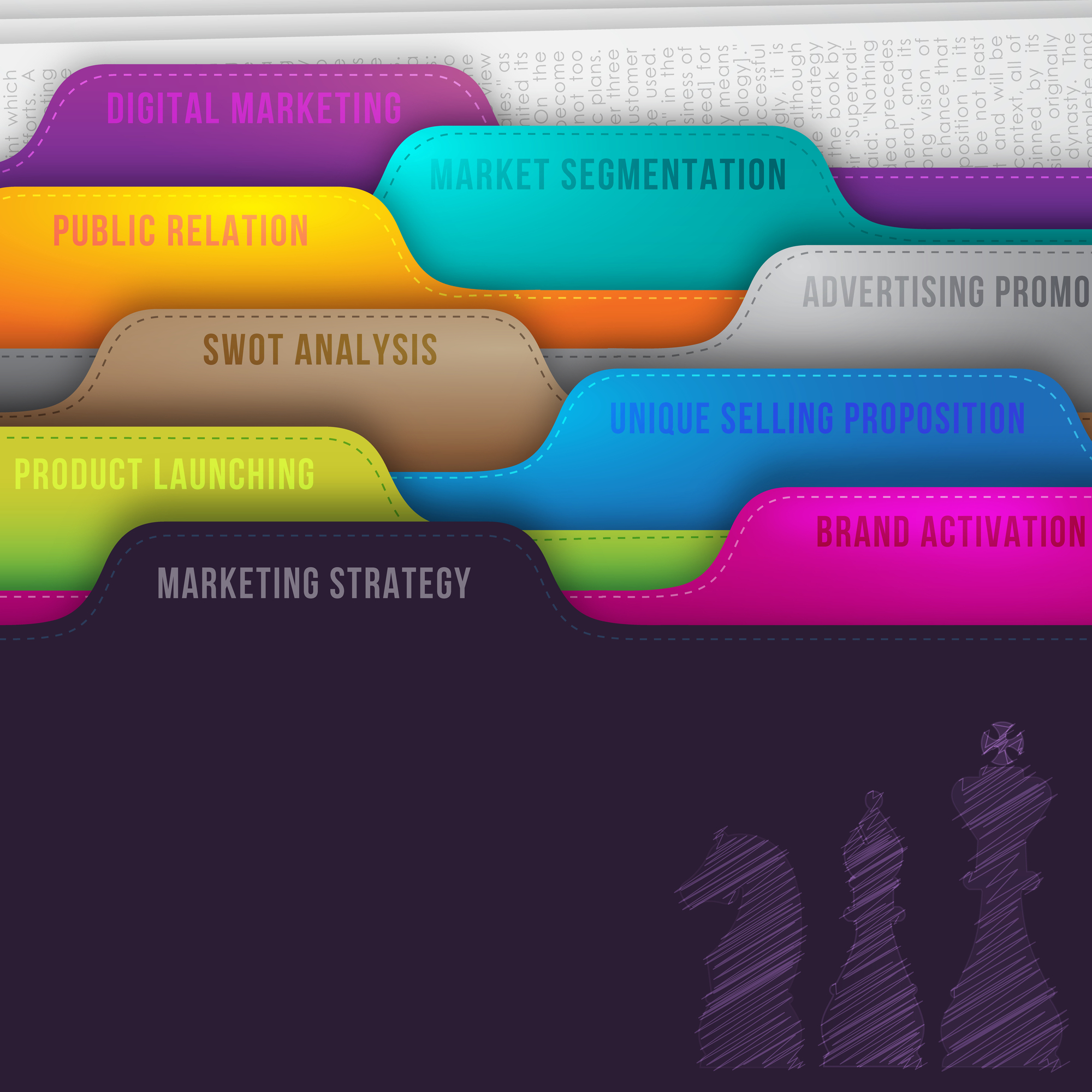Discovering the right target market is like finding a hidden treasure that can propel your business to new heights. It involves understanding who your ideal customers are and shaping your products and marketing strategies to meet their needs. This crucial step not only saves valuable marketing dollars but also ensures that your messages reach those most likely to buy from you, maximizing your business’s potential for growth and success.

While many businesses cast a wide net hoping to catch as many customers as possible, the secret to significant success lies in precision. By identifying and focusing on a specific group of prospective customers, businesses can craft targeted marketing efforts that speak directly to the needs, preferences, and behaviors of their ideal buyers. This targeted approach not only enhances the effectiveness of marketing campaigns but also fosters deeper connections with customers, setting the stage for long-term loyalty and sustained business growth.
Understanding the Concept of Target Market
At its core, the concept of the target market revolves around identifying the overall group of people that a business aims to reach with its marketing efforts. This broad group encompasses potential customers who share certain characteristics and behaviors that make them more likely to purchase your products or services. Understanding your target market is the foundation upon which all targeted marketing efforts are built, enabling businesses to tailor their strategies and messages to meet the specific needs and preferences of their chosen audience.

The Essence and Definition of Target Market
The essence of defining your target market lies in the process of narrowing down the vast ocean of consumers into specific segments that are most likely to engage with your business. A target market definition goes beyond basic demographics to include factors such as shared characteristics, behaviors, and needs. This definition serves as a guiding light for businesses, helping them to focus their marketing efforts and resources on those segments of the market that hold the highest potential for conversion.
Target Market vs. Target Audience: Clarifying the Confusion
While the terms target market and target audience are often used interchangeably, they refer to different concepts. The target market is a broad group of potential consumers a business aims to reach, characterized by shared demographics, behaviors, and needs. In contrast, a target audience is a more narrowly defined subset of the target market, identified for specific targeted marketing efforts. For instance, a tech company might market a smartwatch to a wide audience but target its health feature ads specifically at older, health-conscious individuals, making them the target audience within the larger target market.
Define Your Target Market
Identifying your target market is a pivotal first step in any successful marketing strategy. It enables businesses to understand their addressable market and tailor their products, services, and marketing messages to meet the specific needs of their target consumers. This focused approach not only increases the effectiveness of marketing efforts but also helps businesses allocate their resources more efficiently, ensuring that they reach the individuals most likely to become loyal customers.
Why Target Markets are Crucial for Business Growth
Target markets are essential for business growth because they allow companies to focus their efforts on consumers who are most likely to buy their products or services. This targeted approach helps businesses optimize their resources, enabling them to craft messages that resonate deeply with their audience. By understanding and catering to the specific needs and preferences of their target market, businesses can drive higher engagement, foster brand loyalty, and ultimately, sell more online and offline, accelerating their growth and profitability.

Real-World Examples of Successful Target Market Strategies
Many businesses have achieved remarkable success by effectively identifying and catering to their target markets. For example, a company specializing in eco-friendly running shoes might define their target market as eco-conscious athletes aged 24–45 with disposable income, tailoring their products and marketing messages to appeal to this specific group’s environmental values and fitness needs. Similarly, a meal kit delivery service might focus on busy professionals who value convenience and quality, leveraging targeted marketing strategies to address these consumers’ unique pain points and preferences.
Diving Deep into Market Segmentation
Market segmentation is the process of dividing the broader market into smaller groups with similar needs or characteristics. This strategic approach allows businesses to identify potential customers more precisely and direct their marketing efforts more effectively. By understanding the unique aspects of each segment, companies can tailor their products and communications to meet the specific needs and preferences of different groups, enhancing customer satisfaction and loyalty.
The Role of Demographic Segmentation in Defining Your Target Market
Demographic segmentation plays a crucial role in defining your target market by categorizing potential customers based on personal characteristics such as age, gender, income level, marital status, and family status. This segmentation helps businesses understand who their customers are and what they might need or want. By analyzing demographic data, companies can refine their target market and develop personalized marketing strategies that resonate with specific segments, addressing their unique pain points and preferences.
Age, Gender, Income Level: The Classic Demographic Trio
Age, gender, and income level form the classic trio of demographic segmentation. These factors provide a foundational understanding of a market’s composition and purchasing power, guiding businesses in tailoring their products and messages to meet the distinct needs of different demographic groups. Whether targeting young professionals with disposable income or seniors seeking health-related products, demographic segmentation allows for precise targeting and more effective marketing strategies.
Psychographic Segmentation: Targeting Based on Lifestyle and Values
Psychographic segmentation dives deeper into the psyche of consumers, categorizing them based on their lifestyle, beliefs, values, and aspirations. Unlike demographic segmentation, which outlines who the customers are, psychographic segmentation reveals why they make certain purchasing decisions. This insight enables businesses to craft messages that resonate on a more personal level, appealing to the emotions and values of their target market, and fostering a stronger connection with their brand.

Behavioral Segmentation: Understanding Customer Habits and Usage Patterns
Behavioral segmentation focuses on how consumers interact with products and services, including their purchasing habits, brand loyalty, and usage frequency. This form of segmentation provides valuable insights into the consumer’s decision-making process and loyalty level, allowing businesses to tailor their marketing strategies to encourage repeat purchases and increase customer engagement. Understanding these behaviors helps companies to align their offerings with the consumer’s specific needs and preferences, enhancing the effectiveness of their marketing efforts.
The Geographic Dimension: Localizing Your Marketing Efforts
Geographic segmentation allows businesses to tailor their marketing efforts based on the location of their potential customers. Factors such as population density and geographical location can significantly influence consumer preferences and purchasing behaviors. By localizing marketing strategies, companies can address the unique needs and preferences of consumers in different areas, making their marketing efforts more relevant and effective. This approach helps in creating an ideal customer profile that is more likely to respond positively to targeted marketing efforts.
Refining Your Approach with Target Marketing Strategies
Adopting the right target marketing strategies is essential for reaching and engaging your ideal customers effectively. Strategies such as mass marketing, differentiated marketing, niche marketing, and micromarketing allow businesses to adjust their focus and marketing efforts to suit the specific characteristics of their target market. By selecting and implementing the most appropriate strategies, businesses can optimize their marketing campaigns for maximum impact and efficiency.
Mass Marketing: When Broad Brush Strokes Work Best
Mass marketing stands out for its broad approach, targeting the widest possible audience without distinction. This strategy is ideal for products and services with universal appeal, such as essential household items and basic telecommunications services. By focusing on large market segments, mass marketing aims to maximize exposure and appeal to individuals across various demographics, driving volume sales through widespread brand recognition and availability.
Differentiated Marketing: Tailoring Messages for Multiple Segments
Differentiated marketing stands out by crafting unique marketing campaigns that resonate with various market segments. This strategy allows businesses to effectively communicate their value proposition to different target audiences, ensuring that the message aligns with each segment’s specific needs and preferences.
By deploying a range of marketing campaigns designed to appeal to distinct groups, companies can broaden their reach and enhance the effectiveness of their marketing efforts. Although it requires a higher investment in creating diverse campaigns, the potential to engage more deeply with multiple segments makes differentiated marketing a powerful approach for businesses aiming to connect with a wide customer base.
Niche Marketing: The Power of Focusing on a Narrow Market
Niche marketing harnesses the strength of targeting a narrow market with highly targeted efforts. By focusing on a specific segment, businesses can tailor their products and marketing messages to meet the unique needs and preferences of their potential customers. This concentrated approach allows companies to build strong connections with a targeted group, offering solutions that resonate well with their specific challenges or desires. Niche marketing not only enhances customer satisfaction but also fosters loyalty and can lead to word-of-mouth promotion, setting the stage for sustainable growth within a specialized market area.

Micromarketing: Personalization at Its Finest
Micromarketing represents the pinnacle of marketing personalization, aiming to specifically target highly defined target audiences within a niche market. Unlike mass marketing, which casts a wide net, micromarketing focuses on reaching a narrow audience with tailored messages that speak directly to their needs, preferences, and behaviors. This strategy requires a more significant investment, as it involves creating highly specialized marketing campaigns. However, for businesses where the potential return justifies the investment, micromarketing can lead to unparalleled engagement and loyalty by delivering exactly what a specific group of customers is looking for.
The Journey to Selecting the Right Target Market
Choosing the right target market is a critical step towards business success. It involves understanding the difference between a target market, which is the broad group of people you aim to reach, and a target audience, which is a more narrowly defined group within the target market. By distinguishing between these two, businesses can craft more focused and effective marketing strategies. This process enables companies to allocate their resources more efficiently, ensuring that their marketing efforts are directed towards those most likely to respond positively to their products or services.
Start with Your Existing Customer Base: A Goldmine of Insights
Identifying a target market for your business begins with a close examination of your existing customers. These individuals provide valuable data points that can reveal common characteristics, preferences, and needs. By analyzing your current customer base, you can uncover insights that help refine your target market. This approach allows businesses to build on a foundation of known factors, making market research more focused and effective. Starting with those who already buy from you creates a solid base from which to expand your market understanding and grow your business.
International Segmentation and Targeting: Expanding Your Horizons
Expanding your target market internationally involves splitting your target market into segments based on geographic location, cultural preferences, and market needs. By dividing the market into segments, businesses can tailor their products and marketing strategies to fit the unique characteristics of each region. This granular approach ensures that marketing efforts are relevant and appealing to potential customers in different parts of the world. International segmentation and targeting allow businesses to reach a wider audience, adjust to local preferences, and significantly enhance their global market presence.

Positioning: Crafting Your Unique Place in the Market
Positioning is about defining how your product or service will fit into the lives of your target customers. It involves differentiating your offerings from competitors and highlighting the unique benefits that make your brand stand out. Through effective positioning, businesses can carve out a unique place in the market that resonates with their target audience. This strategic process is essential for creating a strong brand identity that appeals to potential customers, ensuring that your products or services are the first that come to mind when they think of their needs.
Effective Tools and Techniques for Target Market Analysis
Conducting a thorough target market analysis is crucial for understanding who your target customers are and how best to reach them. This process involves using a variety of tools and techniques to gather in-depth insights into consumer behavior, preferences, and trends. By leveraging online tools, analyzing consumer data, and learning from competitors, businesses can gain a clear understanding of their target market. This knowledge enables companies to tailor their products, services, and marketing strategies to meet the specific needs of their target audience, ultimately helping to grow the business.
Leveraging Online Tools for In-depth Market Insights
Online tools offer a wealth of information for businesses looking to gain a deeper understanding of their target market. These platforms can provide valuable insights into consumer behavior, preferences, and trends, enabling companies to make informed decisions about product development, marketing strategies, and more. By leveraging these tools, businesses can uncover key characteristics that define their target market, allowing for more targeted and effective marketing efforts. This approach helps companies to fine-tune their offerings and marketing messages to meet the unique needs and interests of their target audience.
Learning from Competitors: The Unspoken Market Research
Analyzing what your competitors are doing can offer invaluable insights into your target market. By observing their marketing strategies, product offerings, and customer engagement tactics, businesses can identify what works well and where there might be gaps in the market.
This form of market research allows companies to learn from the successes and failures of others, helping to refine their own strategies. Understanding the competitive landscape is crucial for developing a unique value proposition that distinguishes your business from others, appealing directly to the needs and preferences of your target customers.

Case Studies: How Brands Successfully Identified Their Target Market
Examining how successful brands have identified and catered to their target markets provides valuable lessons for businesses seeking to refine their marketing strategies. These case studies reveal the importance of understanding customer needs, preferences, and behaviors, and how aligning products and marketing efforts with these insights can lead to significant business success. From leveraging consumer data to embracing core values that resonate with their target audience, these brands demonstrate the power of a well-defined target market strategy. Analyzing these examples helps businesses learn effective tactics for identifying and engaging their own target markets.
Scotts Miracle-Gro: A Study in Precision Targeting
Scotts Miracle-Gro’s approach to identifying its target market offers a clear example of precision targeting. By focusing on products and marketing strategies that appeal directly to their predominantly male target market, the brand has been able to establish a strong presence in the lawn care industry. Their use of targeted marketing campaigns, such as sponsoring a NASCAR driver and providing valuable lawn care content, showcases their understanding of their target audience’s interests and preferences. This strategic focus on their core values and the specific needs of their target market has been key to Scotts Miracle-Gro’s success.
Lush Cosmetics: Embracing Ethical Consumerism
Lush Cosmetics has successfully identified its target market by embracing ethical consumerism as one of its core values. The brand’s commitment to environmentally friendly products and social responsibility resonates strongly with its target audience, who value these principles. By tailoring its product range and marketing messages to reflect these values, Lush has built a loyal customer base passionate about ethical consumerism. This alignment between the brand’s values and its customers’ preferences highlights the effectiveness of understanding and catering to the unique needs and values of your target market.
Taking the Next Steps: Practical Tips to Define and Reach Your Target Market
Defining your target market is the foundation for any effective marketing strategy. By digging deeper into customer profiles and understanding the geographic location your service will fit best, businesses can define their ideal customer with precision. Developing a marketing plan that leverages this information allows for the creation of buyer personas, which serve as invaluable tools for business owners. These personas help in tailoring marketing messages and products to meet the specific needs of the target market, ensuring that every marketing effort is strategically aligned with the preferences and behaviors of potential customers.

Product: Aligning Offerings with Market Needs
To ensure business growth, companies must align their products with the needs of their target market. This alignment begins with comprehensive market research, which digs into the preferences, needs, and pain points of existing customers. By understanding these aspects, businesses can tailor their offerings, making them more appealing and relevant to the market. This strategy not only meets the immediate needs of consumers but also fosters long-term loyalty and satisfaction.
Price: Setting Strategies that Appeal to Your Target Market
Price setting is a critical aspect of a business strategy that directly impacts market appeal. Effective pricing strategies consider the financial demographics of the target market, including income level and spending habits. By analyzing data referring to these factors, businesses can price their products or services in a way that maximizes accessibility and appeal, balancing profitability with customer satisfaction. This approach ensures that the price point is not a barrier to purchase, making the product accessible to as many people as possible within the target market.
Place: Distribution Tactics to Meet Your Customers Where They Are
Distribution strategies are crucial for making products available to the target market, whether online or in person. The choice between online platforms, physical stores, or a hybrid model should be informed by understanding where the target market prefers to shop. This insight comes from thorough market research, considering factors like geographic location and lifestyle habits. Effective distribution tactics ensure products are readily accessible, enhancing the overall customer experience and supporting business growth.
Promotion: Creating Messages that Resonate
Promotion strategies are designed to communicate the value of a product to the target market effectively. Successful promotional activities hinge on crafting messages that resonate on a personal level, often reflecting shared values, interests, or the ethnic background of the target audience. These tailored messages are more likely to engage potential customers, driving interest and action. The key is to use insights gained from market research and an understanding of existing customers to develop compelling, relatable, and motivational messaging.
Final Thoughts: Mastering the Art of Target Marketing
Mastering the art of target marketing is an ongoing process that requires businesses to stay sharp, strategic, and in tune with the people they serve. It’s not just about knowing who your audience is—it’s about reaching them with the right message, at the right time, in the right way. That’s where The Business Club Inc. comes in.
As a full-service marketing, advertising, and public relations agency, we help companies cut through the noise and connect with their ideal customers. Our team combines real strategy with creative execution to help brands grow with intention. If you’re ready to stop guessing and start reaching the right people with powerful precision, visit us at thebusinessclubinc.com and discover how we can help elevate your marketing impact.
To go even deeper into results-driven strategy, explore one of our growth programs found on the home page, such as our practice marketing system or business scale-up roadmap, designed to help you reach the next level faster.
Continuously Evolving Your Strategies for Market Relevance
To remain competitive and relevant in a rapidly changing market, businesses must continuously evolve their strategies. This means regularly reviewing and adjusting the marketing mix—product, price, place, and promotion—to ensure it aligns with current market needs and preferences. By staying proactive and responsive to new insights, trends, and customer feedback, companies can sustain their market relevance. This dynamic approach to target marketing not only supports business growth but also builds a strong, loyal customer base.
Target Market FAQ: Everything Business Owners Need to Know
What is a target market and why is it essential?
A target market consists of individuals who are most likely to purchase goods or services from your business. Understanding this group is crucial because the market is essential for developing products, messages, and marketing campaigns to appeal to the right people.
How do I define a target market?
To define a target market, consider several factors:
- Demographic characteristics (age, gender, income, relationship status)
- Purchasing habits
- Belief and values
- Lifestyle and location (such as within the United States)
Once you define your ideal customer, you can begin targeting a niche and building a strong business strategy around them.
What are some target market examples?
Here are a few examples of target markets:
- Eco-conscious millennials who purchase goods online
- Busy professionals who want ready-to-eat meals
- Parents of toddlers looking for educational toys
Need more inspiration? Browse additional target market examples in our full guide.
What’s the difference between mass marketing and targeting a niche?
Mass marketing tries to reach everyone with the same message. In contrast, targeting a niche allows you to focus on valuable markets, where you can deliver experiences to be personalized and build a stronger degree of loyalty with your customers.
How do I gather the right data to identify my target market?
Start with tools and analytics. Data refers to factual insights like who visits your website or buys your product. To dig deeper, you can use surveys, CRM systems, or even a good logo maker that tracks audience engagement for informational purposes.
What’s the benefit of demographic targeting?
Demographic targeting allows you to segment by demographic characteristics, making your campaigns more relevant. For instance, if you’re selling online to Gen Z in urban areas, you can craft ads that speak directly to their interests and behaviors.
What is an addressable market?
An addressable market is the total group of people you could potentially reach with your products or services. It helps prioritize your efforts and determine which business markets are worth pursuing.
How does targeting help me build my brand?
When you build your brand, you’re shaping how your target audience perceives you. By understanding your target market sets, you can create content, imagery, and offers that speak directly to them — boosting recognition and conversions.
Pro Tip: Use business tools like branding kits, audience analyzers, and a logo maker to stay consistent across channels and build your brand presence.
Can I target multiple markets?
Yes, through differentiated marketing, you can target several markets with tailored messages. Just make sure each segment receives communication that feels unique and relevant.
How do I develop a marketing plan around my target market?
To develop a marketing plan, start by identifying your addressable market, then break that down into smaller, valuable markets. From there, design direct marketing strategies that target your marketing precisely to the audience that matters most. Include digital tools, branding assets, and tactics to sell online, like SEO, email, and influencer marketing.
What role do beliefs and values play in targeting?
Modern consumers expect alignment. If your business shares the belief and values of your target group, it increases trust and degree of loyalty. Use messaging that authentically reflects these shared views when you craft marketing strategies.
Are business owners a target market too?
Absolutely. If you’re offering business tools, consulting, or services, then business owners may be your primary audience. In this case, your messaging should focus on ROI, time savings, and efficiency to effectively market your business.
How can I market my business effectively to a target market?
To market your business, start by identifying who you want to serve and why. Then use strategic marketing campaigns to appeal directly to their needs and pain points. Platforms like social media, email, and search ads are especially effective when you target your marketing precisely.
How do I sell online successfully to my target market?
To sell online, you must:
- Understand the purchasing habits of customers
- Use business tools like analytics and e-commerce platforms
- Create tailored experiences that align with your belief and values
- Build your brand with a consistent visual identity and messaging
By doing this, you not only sell online more effectively—you also create lasting loyalty.
Is defining a target market really worth the effort?
Absolutely. A defined market helps you craft marketing, avoid wasted resources, and generate more revenue. It also ensures your experiences are personalized and relevant—something modern consumers expect.
